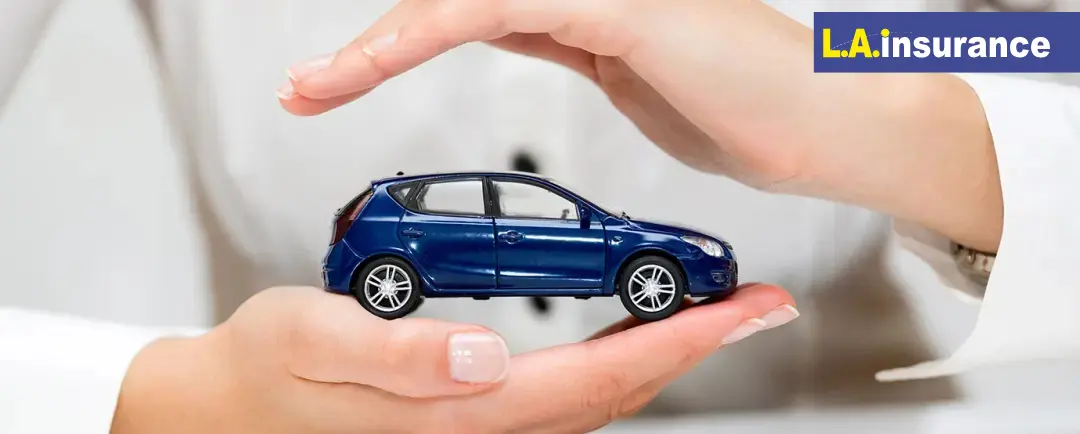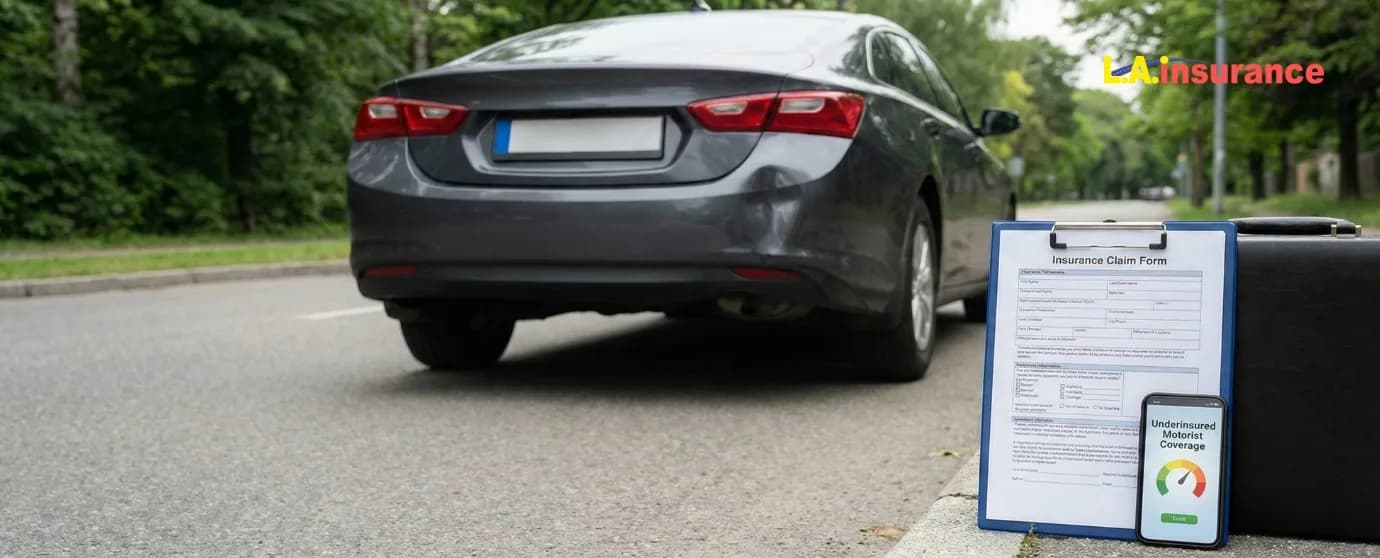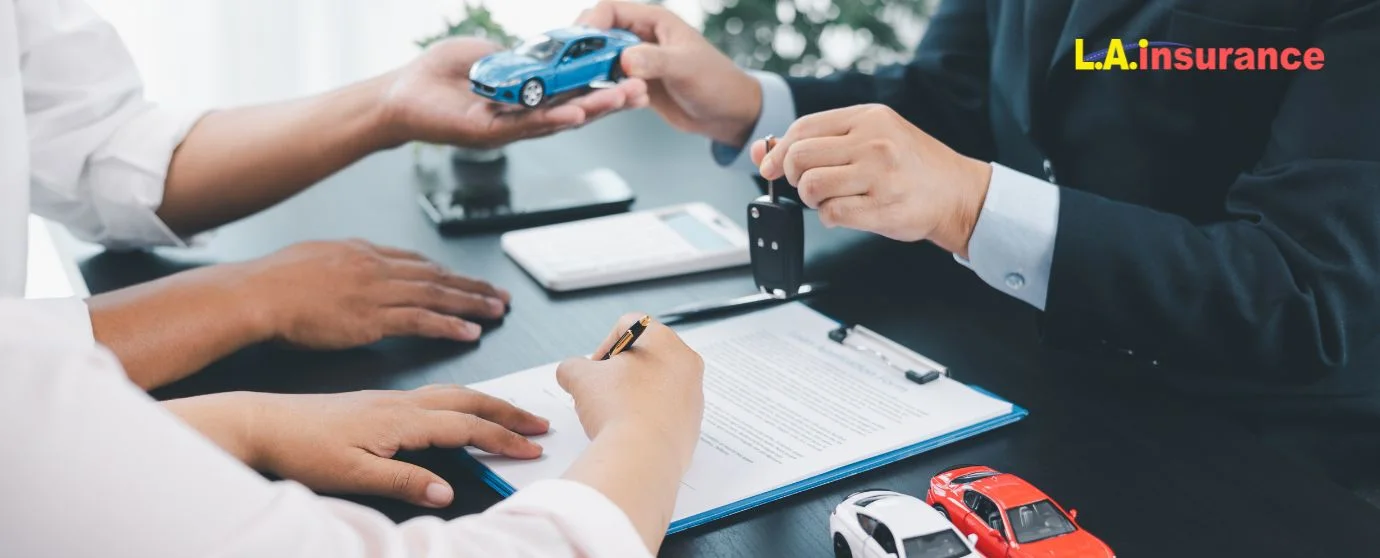
Publish Date: 30-07-2024
Auto Insurance
Last Updated: 04-12-2025
How to Find Out If Someone Has Auto Insurance
Knowing whether someone has auto insurance coverage is important, especially if you have been involved in a car accident with them. It helps determine how you can proceed with insurance claims and compensation for any damage or injuries encountered during the accident.
In most states, auto insurance is mandatory. So, drivers are required to carry some form of auto insurance as proof of financial liability. However, not every driver obeys this requirement which leaves others vulnerable in case of accidents involving uninsured drivers. Now the real question is how to find out if someone has auto insurance coverage.
In this article, our purpose is to provide simple and practical methods for finding out if someone has auto insurance coverage. Hopefully, after reading this, you’ll be able to handle the aftermath of a car accident in a much better way and ensure that you receive the necessary support and compensation.
Importance of Knowing Someone’s Auto Insurance Coverage
Reasons why you should know if someone has car insurance:
- It helps you understand your next steps after a car accident.
- If the other driver is at fault and insured (at least carries liability auto insurance), you can file a claim with their insurer for repairs and medical costs.
- It protects you from paying out of pocket when the other driver’s policy covers the damage.
- If the driver is uninsured or underinsured, you’ll know whether to rely on your own policy or consider legal options.
- Having this information early can make the claims process smoother and help you get timely support and compensation.
How to Find Out If Someone Has Auto Insurance Coverage?
Finding out if someone
has auto insurance is one of the most important steps after a car
accident. It affects how you file a claim, who pays for the damage, and
what your options are if the other driver turns out to be uninsured.
The tricky part is that insurance information is private. In many cases, you
can only access it if you were involved in the crash and have a valid reason,
such as filing
a claim or making a police report. Still, there are several common ways to
check whether another driver has auto insurance coverage.
Here are some practical ways to do so:
- Ask the other driver directly at the scene
- Contact your state’s Department of Motor Vehicles (DMV)
- Seek help from the police, especially when a report is filed
- Request guidance or verification help from your own insurance company
Ask the Other Driver Directly
The simplest way to find out if someone has auto insurance is to ask
them directly. After most accidents, drivers exchange information at the scene.
This usually includes the name of their insurance company and their policy
number. If you’re involved in a collision, stay calm and approach the other
driver when it feels safe to do so. Then request their insurance details in a
straightforward way.
Along with their insurance information, it’s helpful to collect:
- Name
- Contact information
- Car license plate number
- Driver’s license information
- Make, model, and year of their vehicle
Getting these details early can make the claim process smoother. Most drivers share this information without issue because it’s a standard part of resolving an accident. Once you have it, you can start reviewing your options for filing a claim and getting compensation for any damage or injuries.
Contact Your State's Department of Motor Vehicles (DMV)
If you’re unable to get insurance information from the other driver, another option is to contact your state’s Department of Motor Vehicles. In many states, the DMV keeps records connected to vehicle registration, including whether a car has active liability insurance or another form of financial responsibility. This can help you verify someone’s coverage when they won’t share it at the scene.
To request this information, you'll need to provide the DMV with details about the driver or the accident, such as:
- License plate number
- Driver’s license number
- Date and location of the accident
The process isn’t the same everywhere. Some states only release insurance information if you were directly involved in the accident and can provide supporting documents like a police report or proof of a claim. Others may require a formal request form.
Many states now offer online insurance-verification systems, which make the process easier. These tools let you confirm whether a vehicle is insured using the license plate or VIN. States like Texas (TXDOT), Oklahoma (OKIVS), and Georgia (GEICS) already use these systems. Not all states offer them, though, so availability depends on where the accident happened.
Keep in mind that the DMV can deny your request if the information is
incomplete or if you don’t meet their legal requirements. As long as you have a
legitimate reason, they can usually help you verify the insurance details you
need.
Seek Help from the Police
If you’re unable to get the other driver’s insurance information yourself, you can ask the police for help. After most accidents, law enforcement officers come to the scene to assess what happened and file an official report. This report often becomes the most reliable source of the other driver’s insurance details.
When speaking with the police, you can request help in verifying the other driver’s insurance. Share any information you have, such as:
- License plate number
- Driver’s license information
- Contact details
- Vehicle description
Police can use this information to check their system and confirm whether the vehicle is insured. They have access to insurance databases that aren’t available to the public, which makes their verification more accurate.
Keep in mind that, depending on your state, officers may not give you the other driver’s insurance information on the spot. Instead, it will appear in the official crash report once it’s completed. This report is extremely helpful when filing an insurance claim, because it documents the accident, lists the drivers involved, and helps your insurer understand what happened.
Learn more: Can You Claim Car Accident Without Police Report?
Request Information from Your Insurance Company
If you can’t get the other driver’s insurance information on your own, you can reach out to your own insurance company for help. In many cases, your insurer can assist with verifying whether the other driver has active coverage, especially when a claim or accident is already on file.
When you contact your insurer, share every detail you have about the accident and the other driver. This may include their name, license plate number, contact information, or any photos you took at the scene. Your insurance company can use this information to check available databases, review the police report, or contact the other driver’s insurer if needed.
Even if they can’t find the information right away, your insurer will guide you through the next steps. They can explain how to move forward with your claim, tell you what coverage applies, and help you understand your options when the other driver refuses to cooperate or cannot be identified.
What Information Do You Need for Auto Insurance Claims?
When filing an auto insurance claim, having the right information is vital for a smooth process. Here is the necessary information that you need to provide:
- Driver’s Name: You need to provide the full name of the person driving the vehicle at the time of the accident. This helps the insurance company identify who was involved in the incident.
- Contact Information: Email address and telephone number of the driver involved in the accident. Also, make sure to provide accurate contact information for a smooth claim process.
- Insurance Company Name: You need to have the name of the insurance company that provides coverage for the vehicle. This data is required for initiating the claims process with the correct insurer.
- Insurance Policy Number: It’s a unique identifier assigned to the auto insurance policy which serves as a reference for your coverage. This number is also essential when filing a claim with your insurance company.
- Vehicle Details: Make, model, and year of the vehicle involved in the accident. Note that giving accurate car information helps assess the extent of damage and determine coverage.
- Accident Details: The date, time, and location of the accident are needed. Plus, a description of how the accident occurred and the degree of damage or injuries.
- Police Report: If applicable, provide a copy of the police report filed at the scene of the accident. The police report contains key information about the incident, including statements from involved parties and witnesses.
Learn more about how to file a claim after a car accident.
How to Deal with Uninsured or Underinsured Drivers
So what should you do if the other driver doesn’t have car insurance? According to the Insurance Information Institute, 14 percent, or about one in seven drivers are uninsured. However, this number varies depending on the state. In Michigan, for example, 19.6 percent of drivers don’t have an auto policy (2022). In this scenario, if you’re involved in an accident with an uninsured driver, how do you get insurance coverage for the damage?
There are several steps you can take in this situation.
First, collect as much information as possible from the other driver, including their name, contact details, and vehicle information. Then, report the accident to the police and get a police report.
Next, you should notify your insurance company about the accident and provide them with all the details, along with the police report. If you have uninsured motorist (UM) coverage, you can file a claim with your own insurer to cover medical bills, lost wages, and vehicle damage. If you have collision coverage, it can also help pay for repairs, minus your deductible.
In cases where the other driver is uncooperative or difficult to track (hit-and-run case), your insurer and the police can assist in the investigation. Also, you can take legal advice from your auto accident attorney as well to know other compensation options.
Don’t have an auto insurance policy? Contact LA Insurance today to get an affordable full-coverage auto insurance quote or find an agent here for a free consultation. However, if you’re looking for the most affordable insurance agency, L.A. Insurance is certainly the reliable choice.
What Should I Do to Get Another Driver’s Insurance Information After a Hit-and-Run?
What should you do if you are in a hit-and-run, and the other driver flees without sharing their insurance information? You can take action. Even though it can be difficult to find their insurance details, there are smart steps you can follow to help identify them and their insurance coverage.
- Call the police immediately and file a report.
- If possible, write down the vehicle’s make and model, color, and license plate.
- Talk to any witness and collect their contact info.
- Look for a security or traffic camera nearby.
- Take photos of the damage and the accident scene.
- Ask the nearby business if they have footage.
- Give all details to the police. They may locate the driver.
- Your insurer can check for any matching insurance records.
Kindly note that if you unfortunately become a victim of hit and run accident, don’t try to chase the other driver to acquire car insurance information. Always stay calm and let law enforcement handle.
For more information, read our resource on what to do after a hit and run.
Situations Where You Should Know Someone’s Auto Insurance Status
There are some circumstances where you should know whether the car owner has auto insurance or not. For instance, if you borrow a friend’s or family member’s car, you should verify that the vehicle is insured. Knowing this ensures you’re protected in case of unfortunate events like accidents.
Also, if you lend your car to someone, you should confirm that they have a valid driver’s license and vehicle insurance coverage. This way you can avoid complications if they get into an accident while driving your car. Besides, if you run a business that requires employees to drive, you should know their auto insurance status. Doing so can help you protect the company from liability in case of an accident.
When participating in ridesharing carpooling, make sure the driver has valid insurance to protect yourself. Furthermore, in field trips or school events, school authorities should verify that parents or volunteers driving students have proper auto insurance.
Read More: Can You Cancel an Auto Insurance Claim After Filing it?
Key Takeaways
- After a car crash, try to exchange insurance and contact information with the other driver.
- Contact your state's DMV if the other driver is uncooperative or flees the scene.
- If it’s a hit-and-run case, file a police report to investigate and track down the other driver’s information.
- Contact your own insurer and get their assistance in finding the other driver's auto insurance information.
- If you’ve uninsured motorist coverage on your policy, it can protect you when other driver lacks insurance.
- Document everything. Take photos and collect witness statements at the accident scene to support your insurance claim.
- Talk to your auto accident attorney if the other driver is uninsured.
- Documents like the Manufacturer’s Certificate of Origin, bill of sale, and vehicle registration can be vital for proving ownership of your car.
Frequently Asked Questions
1. What Is a Crash Report?
A crash report is an official report created by the police detailing the facts of a car accident. It includes information about the drivers, vehicles, witnesses, and the accident scene.
2. How can a police crash report help me verify the other driver’s insurance?
A police crash report lists both drivers, vehicle details, and often the other driver’s insurance information. Once it’s filed, you can request a copy from the police or state system. Your insurer can use the report to confirm coverage, document the accident, and speed up your claim.
3. How To Find Out If Someone Has Car Insurance in Michigan?
To check if someone has car insurance in Michigan, you can contact the Michigan Department of State with the driver’s license number, vehicle license plate, or VIN. Besides, filing a crash report and contacting your insurer can also help verify the other driver’s insurance status.
4. What Should You Do If the Other Driver Refuses to Provide Insurance Information?
If the other driver refuses to provide auto insurance information, you can report the accident to the police. The police can help obtain the necessary details. Also, you can contact your own insurance provider to learn what steps to take in this situation.
5. Can I Hire a Private Investigator to Find Out If Someone Has Auto Insurance?
If you’re busy or don’t want to engage yourself in the investigation, you can certainly hire a private investigator (PI). A PI can legally gather information through surveillance, public records, and other lawful means to support your claim or any legal dispute. However, a PI may not get access to any private or confidential information without proper authorization. On top of that, a PI cannot legally obtain someone’s auto insurance records unless they have a legitimate reason or consent. In such a case, getting legal help from an attorney or seeking police help would be considered the smartest decision.
6. Can I Get Someone's Insurance Information from Their License Plate?
Yes, you can request someone’s insurance information using their license plate. In fact, it is the most vital piece of information for tracking down a driver’s insurance coverage. If you want to do it yourself, simply contact the local DMV and provide the license plate number. The DMV may require you to submit forms and documentation to verify that you have a valid reason for requesting another driver’s information. You may need to submit a police report or insurance claim information as proof. If your request is justified, the DMV may release the insurance details.
Tag :
Auto insurance
cheap insurance
LA Insurance








